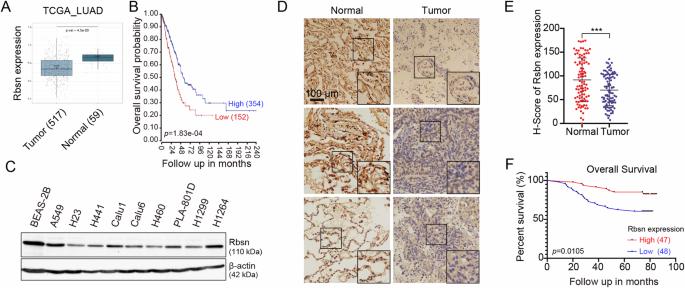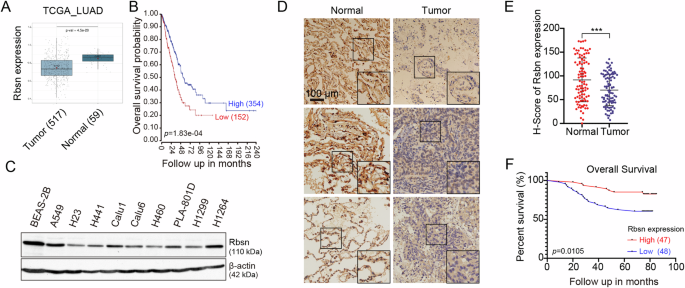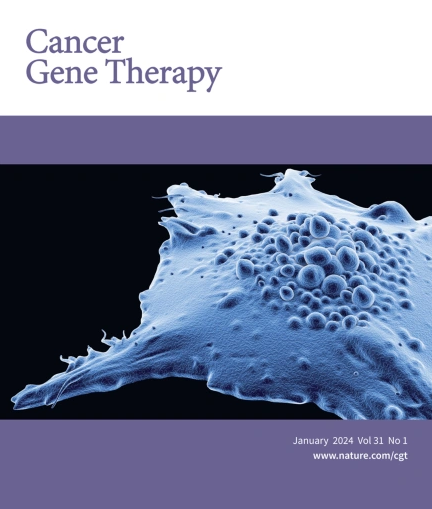Rabenosyn-5 suppresses non-small cell lung cancer metastasis via inhibiting CDC42 activity
IF 4.8
3区 医学
Q1 BIOTECHNOLOGY & APPLIED MICROBIOLOGY
引用次数: 0
Abstract
Metastasis, the primary cause of death in lung cancer patients, is facilitated by cytoskeleton remodeling, which plays a crucial role in cancer cell migration and invasion. However, the precise regulatory mechanisms of intracellular trafficking proteins involved in cytoskeleton remodeling remain unclear. In this study, we have identified Rabenosyn-5 (Rbsn) as an inhibitor of filopodia formation and lung cancer metastasis. Mechanistically, Rbsn interacts with CDC42 and functions as a GTPase activating protein (GAP), thereby inhibiting CDC42 activity and subsequent filopodia formation. Furthermore, we have discovered that Akt phosphorylates Rbsn at the Thr253 site, and this phosphorylation negates the inhibitory effect of Rbsn on CDC42 activity. Additionally, our analysis reveals that Rbsn expression is significantly downregulated in lung cancer, and this decrease is associated with a worse prognosis. These findings provide strong evidence supporting the role of Rbsn in suppressing lung cancer progression through the inhibition of metastasis.


Rabenosyn-5 通过抑制 CDC42 的活性抑制非小细胞肺癌的转移。
转移是肺癌患者死亡的主要原因,细胞骨架重塑促进了转移,而细胞骨架重塑在癌细胞迁移和侵袭中起着至关重要的作用。然而,参与细胞骨架重塑的细胞内转运蛋白的精确调控机制仍不清楚。本研究发现,Rabenosyn-5(Rbsn)是丝状体形成和肺癌转移的抑制剂。从机理上讲,Rbsn 与 CDC42 相互作用,发挥 GTPase 激活蛋白(GAP)的功能,从而抑制 CDC42 的活性和随后的丝状体形成。此外,我们还发现 Akt 会使 Rbsn 在 Thr253 位点磷酸化,而这种磷酸化会抵消 Rbsn 对 CDC42 活性的抑制作用。此外,我们的分析还发现,Rbsn的表达在肺癌中显著下调,而这种下降与预后恶化有关。这些发现为 Rbsn 通过抑制转移抑制肺癌进展提供了强有力的证据。
本文章由计算机程序翻译,如有差异,请以英文原文为准。
求助全文
约1分钟内获得全文
求助全文
来源期刊

Cancer gene therapy
医学-生物工程与应用微生物
CiteScore
10.20
自引率
0.00%
发文量
150
审稿时长
4-8 weeks
期刊介绍:
Cancer Gene Therapy is the essential gene and cellular therapy resource for cancer researchers and clinicians, keeping readers up to date with the latest developments in gene and cellular therapies for cancer. The journal publishes original laboratory and clinical research papers, case reports and review articles. Publication topics include RNAi approaches, drug resistance, hematopoietic progenitor cell gene transfer, cancer stem cells, cellular therapies, homologous recombination, ribozyme technology, antisense technology, tumor immunotherapy and tumor suppressors, translational research, cancer therapy, gene delivery systems (viral and non-viral), anti-gene therapy (antisense, siRNA & ribozymes), apoptosis; mechanisms and therapies, vaccine development, immunology and immunotherapy, DNA synthesis and repair.
Cancer Gene Therapy publishes the results of laboratory investigations, preclinical studies, and clinical trials in the field of gene transfer/gene therapy and cellular therapies as applied to cancer research. Types of articles published include original research articles; case reports; brief communications; review articles in the main fields of drug resistance/sensitivity, gene therapy, cellular therapy, tumor suppressor and anti-oncogene therapy, cytokine/tumor immunotherapy, etc.; industry perspectives; and letters to the editor.
 求助内容:
求助内容: 应助结果提醒方式:
应助结果提醒方式:


